Filter by
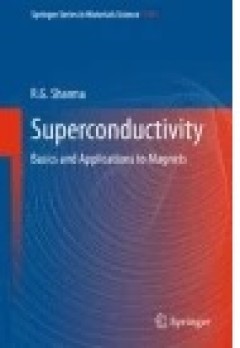
Superconductivity
This book presents the basics and applications of superconducting magnets. It explains the phenomenon of superconductivity, theories of superconductivity, type II superconductors and high-temperature cuprate superconductors. The main focus of the book is on the application to superconducting magnets to accelerators and fusion reactors and other applications of superconducting magnets. The therm…
- Edition
- -
- ISBN/ISSN
- -
- Collation
- XXII, 414
- Series Title
- Springer Series in Materials Science
- Call Number
- -

A Stargazing Program for Beginners: A Pocket Field Guide
Sets out a simple month-by-month program to reveal all of the night sky's biggest and most beautiful secrets in just one year – and with only a few hours of stargazing each month By investing just an hour a week and $50 in binoculars, it’s possible to learn a few simple techniques and quickly gain a real insight into the night sky's ever-changing patterns – and what they tell us about E…
- Edition
- -
- ISBN/ISSN
- 978-3-319-22072-7
- Collation
- XVI, 419
- Series Title
- Astronomer's Pocket Field Guide
- Call Number
- 520 CAR s
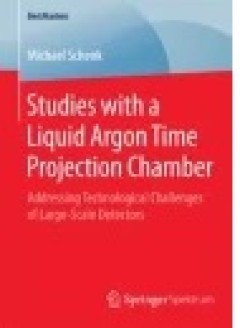
Studies with a Liquid Argon Time Projection Chamber
Michael Schenk evaluates new technologies and methods, such as cryogenic read-out electronics and a UV laser system, developed to optimise the performance of large liquid argon time projection chambers (LArTPC). Amongst others, the author studies the uniformity of the electric field produced by a Greinacher high-voltage generator operating at cryogenic temperatures, measures the linear energy t…
- Edition
- -
- ISBN/ISSN
- 978-3-658-09430-0
- Collation
- XI, 152
- Series Title
- BestMasters
- Call Number
- -
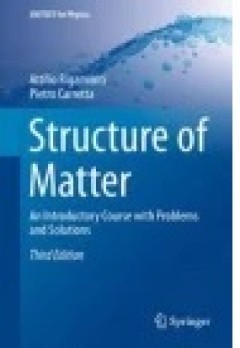
Structure of Matter
This textbook, now in its third edition, provides a formative introduction to the structure of matter that will serve as a sound basis for students proceeding to more complex courses, thus bridging the gap between elementary physics and topics pertaining to research activities. The focus is deliberately limited to key concepts of atoms, molecules and solids, examining the basic structural aspec…
- Edition
- -
- ISBN/ISSN
- 978-3-319-17897-4
- Collation
- XXII, 604
- Series Title
- 2198-7890
- Call Number
- -

A Guide to Hubble Space Telescope Objects: Their Selection, Location, and Sig…
From the authors of "How to Find the Apollo Landing Sites," this is a guide to connecting the view above with the history of recent scientific discoveries from the Hubble Space Telescope. Each selected HST photo is shown with a sky map and a photograph or drawing to illustrate where to find it and how it should appear from a backyard telescope. Here is the casual observer's chance to locate the…
- Edition
- -
- ISBN/ISSN
- 978-3-319-18872-0
- Collation
- -
- Series Title
- The Patrick Moore Practical Astronomy Series
- Call Number
- 520 CHE g
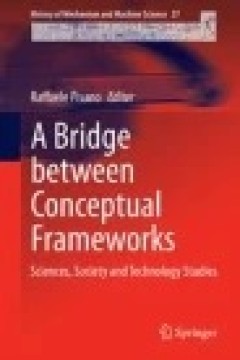
A Bridge between Conceptual Frameworks: Sciences, Society and Technology Studies
This book analyzes scientific problems within the history of physics, engineering, chemistry, astronomy and medicine, correlated with technological applications in the social context. When and how is tension between disciplines explicitly practised? What is the conceptual bridge between science researches and the organization of technological researches in the development of industrial applicat…
- Edition
- -
- ISBN/ISSN
- 978-94-017-9645-3
- Collation
- -
- Series Title
- History of Mechanism and Machine Science
- Call Number
- 530.01 BRI b
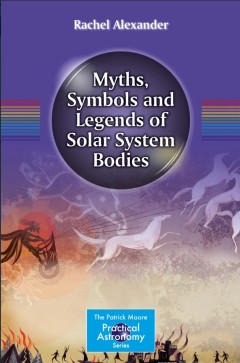
Myths, Symbols and Legends of Solar System Bodies
This book is an amateur astronomer’s guide to the mythology and symbolism associated with the celestial bodies in the Solar System, and even includes some of the legendary tales of people who had or have a connection with these objects. It explores different cultures (for example, the Greco-Roman and the Norse) and different times and how stories were used to explain the worlds they saw above…
- Edition
- 1
- ISBN/ISSN
- 978-1-4614-7066-3
- Collation
- XVI, 234
- Series Title
- The Patrick Moore Practical Astronomy Series
- Call Number
- -
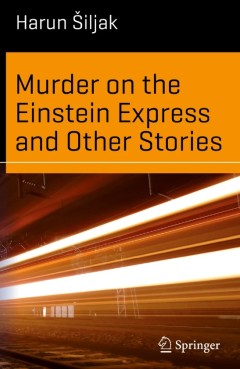
Murder on the Einstein Express and Other Stories
This collection of stories touches upon many genres: Normed Trek is a clever and witty Alice-in-Wonderland-type narrative set in the realm of mathematical analysis, The Cantor Trilogy is a dystopia about the consequences of relying upon computer-based mathematical proofs, In Search of Future Time bears the flavor of Tales from Arabian Nights set in the future, and – last but not least - Murde…
- Edition
- 1
- ISBN/ISSN
- 978-3-319-29065-2
- Collation
- VII, 79
- Series Title
- Science and Fiction
- Call Number
- -

The Unknown as an Engine for Science An Essay on the Definite and the Indefi…
This book explores the limits of our knowledge. The author shows how uncertainty and indefiniteness not only define the borders confining our understanding, but how they feed into the process of discovery and help to push back these borders. Starting with physics the author collects examples from economics, neurophysiology, history, ecology and philosophy. The first part shows how informatio…
- Edition
- -
- ISBN/ISSN
- 978-3-319-18509-5
- Collation
- -
- Series Title
- -
- Call Number
- -

The Twenty-first Century in Space
This final entry in the History of Human Space Exploration mini-series by Ben Evans continues with an in-depth look at the latter part of the 20th century and the start of the new millennium. Picking up where Partnership in Space left off, the story commemorating the evolution of manned space exploration unfolds in further detail. More than fifty years after Yuri Gagarin’s pioneering journey …
- Edition
- -
- ISBN/ISSN
- 978-1-4939-1307-7
- Collation
- -
- Series Title
- -
- Call Number
- -
 Computer Science, Information & General Works
Computer Science, Information & General Works  Philosophy & Psychology
Philosophy & Psychology  Religion
Religion  Social Sciences
Social Sciences  Language
Language  Pure Science
Pure Science  Applied Sciences
Applied Sciences  Art & Recreation
Art & Recreation  Literature
Literature  History & Geography
History & Geography